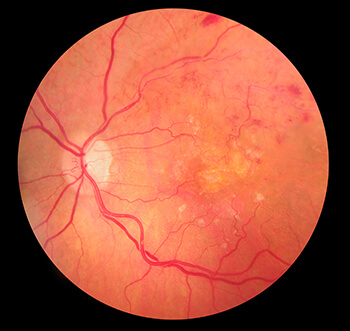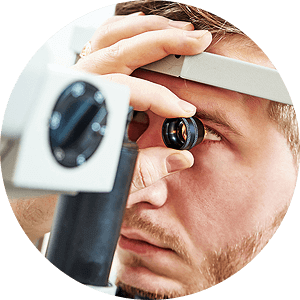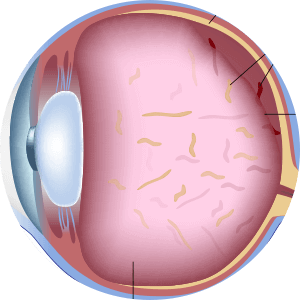Manhattan Retinal Vascular Disease Treatment
What is Retinal Vein Occlusion?
 A retinal vein occlusion occurs when one of the veins in the retina becomes blocked or contains a blood clot. Blockages can happen in the main artery. Blockages could also occur in the branch of veins and arteries throughout the retina. The blockage in the in the veins can cause blood and other fluids to build up. This makes the retina unable to filter light properly. When the light coming in through the cornea is inhibited, the retina is not able to do its job, and sudden vision loss can occur. The severity of the vision loss may be dependent where the blockage or clot occurred. Retinal vein occlusion is a potentially serious condition.
A retinal vein occlusion occurs when one of the veins in the retina becomes blocked or contains a blood clot. Blockages can happen in the main artery. Blockages could also occur in the branch of veins and arteries throughout the retina. The blockage in the in the veins can cause blood and other fluids to build up. This makes the retina unable to filter light properly. When the light coming in through the cornea is inhibited, the retina is not able to do its job, and sudden vision loss can occur. The severity of the vision loss may be dependent where the blockage or clot occurred. Retinal vein occlusion is a potentially serious condition.
The exact cause of retinal vein occlusion is currently unknown, but the risk factors include:
- heart problems
- diabetes
- high blood pressure
- high cholesterol
- being over the age of 60
- smoking
What are the Symptoms of Retinal Vein Occlusion?
Symptoms of retinal vein occlusion include a sudden change in vision, such as blurriness, partial of vision, or complete loss of vision. There is no physical pain associated with this disease.
How do you Treat Retinal Vein Occlusion?
Treatment of retinal vein disease is generally not needed, as many patients will regain their vision over time. However, patients are not likely to regain full vision, as the artery will still be blocked without treatment. In more serious cases, treatment may be necessary. If the retina specialist is concerned about blockages in the other eye, a treatment or prevention plan may be necessary. The treatment of retinal vein occlusion involves medications such as blood thinners or injections in the eye. Sometimes laser therapy is used to break down the blockage in the blood vessels.
If you are showing symptoms of retinal vein occlusion, or if you have any other concerns, give Angioletti Retinal Associates a call!



